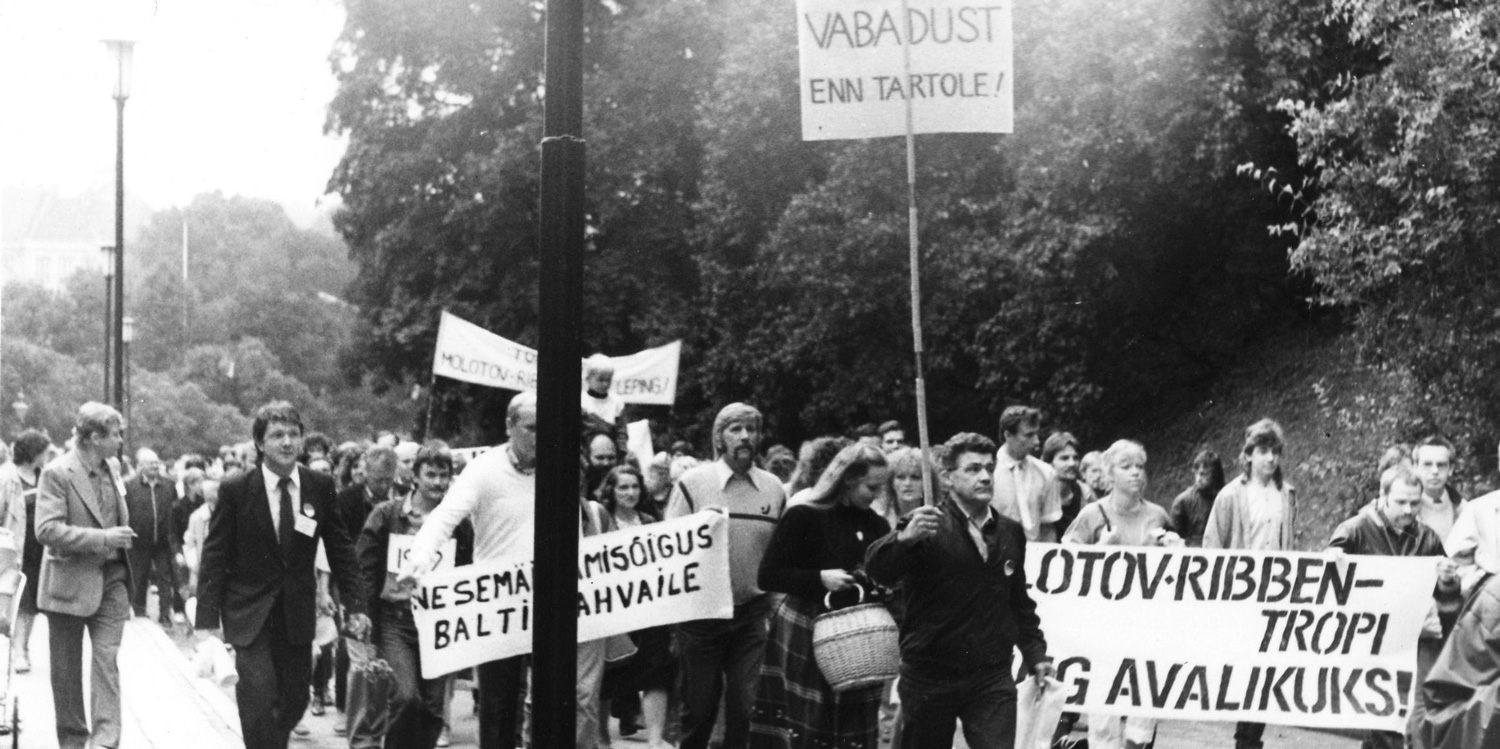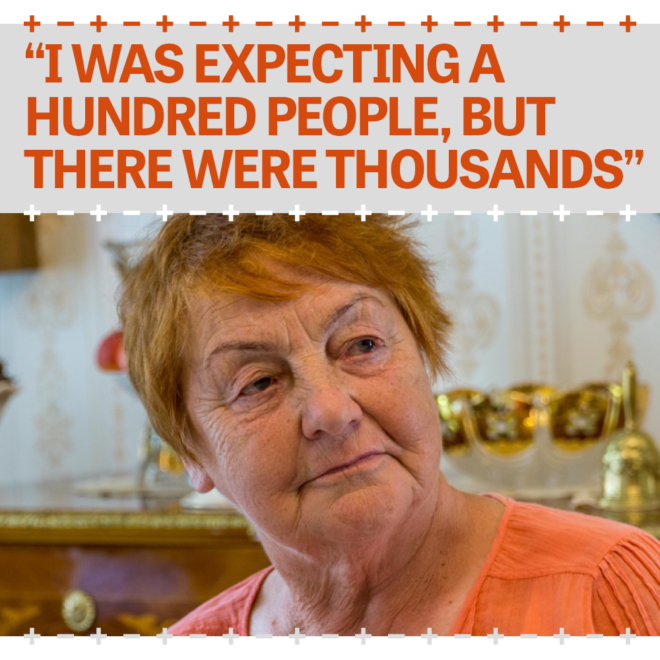Lagle Parek (1941), Estonia, Tallinn, 23 August 1987
“On the last day of January 1987, I was released from the prison camp. We ate and drank for three days together with family and friends. Of course, I did not continue my dissident activities right away; after three years in prison, I had to understand what was going on first. I made plans with Tiit Madisson and Heike Ahone in Pärnu. We felt that the situation could not go on any longer.
“We organised a protest rally in Tallinn on 23 August. It was exactly 48 years since the Molotov-Ribbentrop Pact was signed, the secret agreement between Hitler and Stalin whereby the Baltic States were basically handed over to Russia. We wanted to enforce the right to publish the text of the pact to show everyone how we had lost our freedom.
“We asked acquaintances at Radio Voice of Americ to announce the demonstration. It was supposed to start at noon, but at ten to twelve nobody was there yet. Then, at exactly twelve o’clock, the place suddenly started to fill up with people. Unbelievable! Between 2000 and 5000 people showed up; writers, academics but ordinary workers as well.
“It was an amazing feeling but surreal too. There were speeches, and we demanded the release of political prisoners. Independence was not mentioned at that point. It was too early for that. We were hopeful, of course, but we did not even dare to fantasise about that yet.
“Was it risky to organise such a rally? We did not think about that either, and that was very sensible. Something had to be done. It was a peaceful protest. The police did not know what to do with us; the policemen were just standing there. They had not expected something like this at all; they had not received instructions about how to handle the situation. At later demonstrations, it would go very differently.
“’Hirve Park’ resulted in a wave of protests; not all of them took an equally strong position, but something had changed in people’s minds. Now they knew that they could, no, had to express their opinions. People started to understand that they were important. It was the first political step.
“In that entire Soviet period, I never thought about quitting my dissident activities. Never! Why am I not broken? I do not know how that is possible either, interestingly enough. We were sent to Siberia in 1949, my sister, my grandmother and I, because my mother owned banned books. We arrived there, and whole families were crying. My grandmother – she was an actress – said: ‘We are not going to cry here!’”

Hirve Park Demonstration of 1987
Demonstrations to mark the signing of the Molotov-Ribbentrop Pact were not just held in Estonia but in Latvia and Lithuania as well. In Estonia, the protest led to the creation of the Estonian Group for the Publication of the Secret Protocols of the Molotov-Ribbentrop Pact (MRP-AEG). It was the first organisation that demanded immediate and unconditional independence. In addition, the Estonian Heritage Society was founded by Mart Laar. He became the first elected prime minister of independent Estonia.
Parek spent four years in the Gulag as a child. She became a dissident and was imprisoned in a Soviet camp for another three years in the eighties. After independence, she became the Minister of Internal Affairs in Laar’s cabinet. She converted to Catholicism and now lives in the Pirita Convent in Tallinn.
